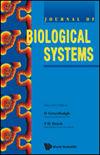A TUMOR-IMMUNE MODEL WITH MIXED IMMUNOTHERAPY AND CHEMOTHERAPY: QUALITATIVE ANALYSIS AND OPTIMAL CONTROL
IF 1.5
4区 数学
Q3 BIOLOGY
引用次数: 0
Abstract
We develop a mathematical model of tumor-immune interactions, including six populations (tumor cells, CD8[Formula: see text]T cells, natural killer (NK) cells, dendritic cells, helper T cells, cytokine interleukin-12 (IL-12)) and three potential treatments (chemotherapy, Tumor-infiltrating lymphocyte (TIL) therapy and IL-12 therapy). We characterize the dynamics of our model without treatment through stability and sensitivity analysis, which provides a broad understanding of the long-term qualitative behavior. To find the best combination of the chemo-immunotherapy regimens to eliminate tumors, we formulate an optimal control problem with path constraints of total drug dose and solve it numerically with the optimal control software Pyomo. We also simulate the scenarios of traditional treatment protocols as a comparison and find that our optimal treatment strategies have a better therapeutic effect. In addition, numerical simulation results show that IL-12 therapy is a good adjunctive therapy and has a high potential for inhibiting a large tumor in combination with other therapy. In most cases, combination therapy is more effective than a single treatment.一种混合免疫治疗和化疗的肿瘤免疫模型:定性分析和最优控制
我们开发了一个肿瘤免疫相互作用的数学模型,包括六个群体(肿瘤细胞、CD8[公式:见正文]T细胞、自然杀伤(NK)细胞、树突状细胞、辅助T细胞、细胞因子白细胞介素-12(IL-12))和三种潜在的治疗方法(化疗、肿瘤浸润淋巴细胞(TIL)治疗和IL-12治疗)。我们通过稳定性和敏感性分析来表征未经处理的模型的动力学,这为长期定性行为提供了广泛的理解。为了找到消除肿瘤的化疗-免疫疗法的最佳组合,我们提出了一个具有总药物剂量路径约束的最优控制问题,并用最优控制软件Pyomo对其进行了数值求解。我们还模拟了传统治疗方案的场景作为比较,发现我们的最佳治疗策略具有更好的治疗效果。此外,数值模拟结果表明,IL-12疗法是一种很好的辅助疗法,与其他疗法联合使用具有很高的抑制大肿瘤的潜力。在大多数情况下,联合治疗比单一治疗更有效。
本文章由计算机程序翻译,如有差异,请以英文原文为准。
求助全文
约1分钟内获得全文
求助全文
来源期刊
CiteScore
2.80
自引率
12.50%
发文量
31
审稿时长
1 months
期刊介绍:
The Journal of Biological Systems is published quarterly. The goal of the Journal is to promote interdisciplinary approaches in Biology and in Medicine, and the study of biological situations with a variety of tools, including mathematical and general systems methods. The Journal solicits original research papers and survey articles in areas that include (but are not limited to):
Complex systems studies; isomorphies; nonlinear dynamics; entropy; mathematical tools and systems theories with applications in Biology and Medicine.
Interdisciplinary approaches in Biology and Medicine; transfer of methods from one discipline to another; integration of biological levels, from atomic to molecular, macromolecular, cellular, and organic levels; animal biology; plant biology.
Environmental studies; relationships between individuals, populations, communities and ecosystems; bioeconomics, management of renewable resources; hierarchy theory; integration of spatial and time scales.
Evolutionary biology; co-evolutions; genetics and evolution; branching processes and phyllotaxis.
Medical systems; physiology; cardiac modeling; computer models in Medicine; cancer research; epidemiology.
Numerical simulations and computations; numerical study and analysis of biological data.
Epistemology; history of science.
The journal will also publish book reviews.

 求助内容:
求助内容: 应助结果提醒方式:
应助结果提醒方式:


